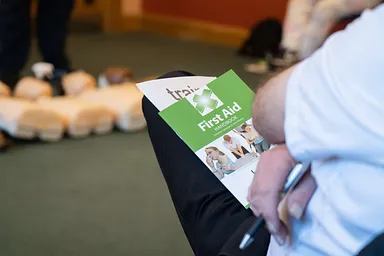Cardio Pulmonary Resuscitation (CPR) is more complicated than what is played out on the medical dramas and the movies. First Aider’s will deal with a real life casualty who may vomit, have blood on their face and has bones which can move and crack.
In reality CPR needs to be simplified as much as possible to help the first aider get through the intervening period between the onset of CPR and the arrival of the emergency services. The use of barrier devices such as CPR face shields can make a real difference.

What are the risks?
Delivering mouth to mouth CPR is not completely free from risk. It is possible that infections could cross over from casualty to bystander and vice versa, but the risks are lower than the public's perception. Human immunodeficiency virus (HIV) spreads through blood to blood contact. Therefore a bystander would need broken skin and even then the risks are much lower than what is perceived.
However no person should ever feel the need to put themselves at risk and is under no pressure to do so.
What’s expected from you?
The minimum that is expected from a first aider / bystander is not to not abandon a non breathing casualty. Call the emergency services with your location and the professionals in the UK with deal with the situation. Sadly the reality is that casualties rarely survive in these cases without CPR because of the onset of oxygen depletion within the body.
Where possible initiate CPR at the earliest possible opportunity with or without barrier devices. In difficult circumstance consider compression only CPR and continue either of the above until the emergency services tell you to stop.
Barrier Devices
CPR face shields come in many forms. Some are just a plastic sheet with a small valve whilst other masks (Pictured) can lift the first aider away from the casualty's face. Face shields can help prevent cross infection and make the process easier to administer.
Basic devices are housed in a foil wrapper and can be kept in first aid kits, handbags and on keyrings. Masks made need to be kept separately near first aid equipment or as part of supplies in cars / vans.
The basic aim of these devices is that the first aider / bystander can deliver rescue breaths (delivering oxygen) without the need to make contact with the casualty’s mouth / face. Thereby partially eliminating the risk associated with such treatment.

.jpg)
.jpg)